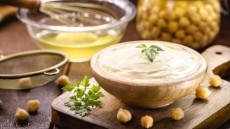Fruit anitioxidants develop with ripeness
antioxidants, making them a potential source of health-promoting
ingredients.
Scientists at the University of Innsbruck in Austria claim to be the first to have identified the decomposition mechanism and products of apples and pears, and their findings suggest that as fruits go bad their antioxidant levels increase. Key to the process is the change in colour that occurs as fruits ripen. According to lead researcher Bernhard Kräutler, fruit undergoes a similar decomposition process as leaves that turn from green to red to yellow to brown. This colour change is caused by the breakdown and disappearance of chlorophyll, which is what gives leaves and fruits their green colour. Kräutler and his team explain that for a long time no one really knew what happened to chlorophyll during this decomposition process. Through their research together with botanists over the past several years, they claim to have identified the first decomposition products in leaves. These are colourless, polar NCCs (nonfluorescing chlorophyll catabolytes), that contain four pyrrole rings - like chlorophyll and heme. These catabolytes are the same for apples and pears, and are also the same as those found in the leaves of the fruit trees, said the researchers. After examining the peels of apples and pears, they found that in ripe fruits, NCCs replace the chlorophyll, especially in the peel and the flesh immediately below it. "There is clearly one biochemical pathway for chlorophyll decomposition in leaf senescence and fruit ripening," said Kräutler. "When chlorophyll is released from its protein complexes in the decomposition process, it has a phototoxic effect: when irradiated with light, it absorbs energy and can transfer it to other substances. For example, it can transform oxygen into a highly reactive, destructive form," report the researchers. However, the NCCs have an opposite effect, they said. These are powerful antioxidants and can thereby play an important physiological role for a plant. In the same way, when these are consumed as part of the human diet, they can play the same antioxidative role in consumers' systems. Source: Angewandte Chemie International Edition 2007, 46, 8699-8702 doi: 10.1002/anie.200703587 Colorless Tetrapyrrolic Chlorophyll Catabolites in Ripening Fruit Are Effective Antioxidants Author: Bernhard Kräutler













